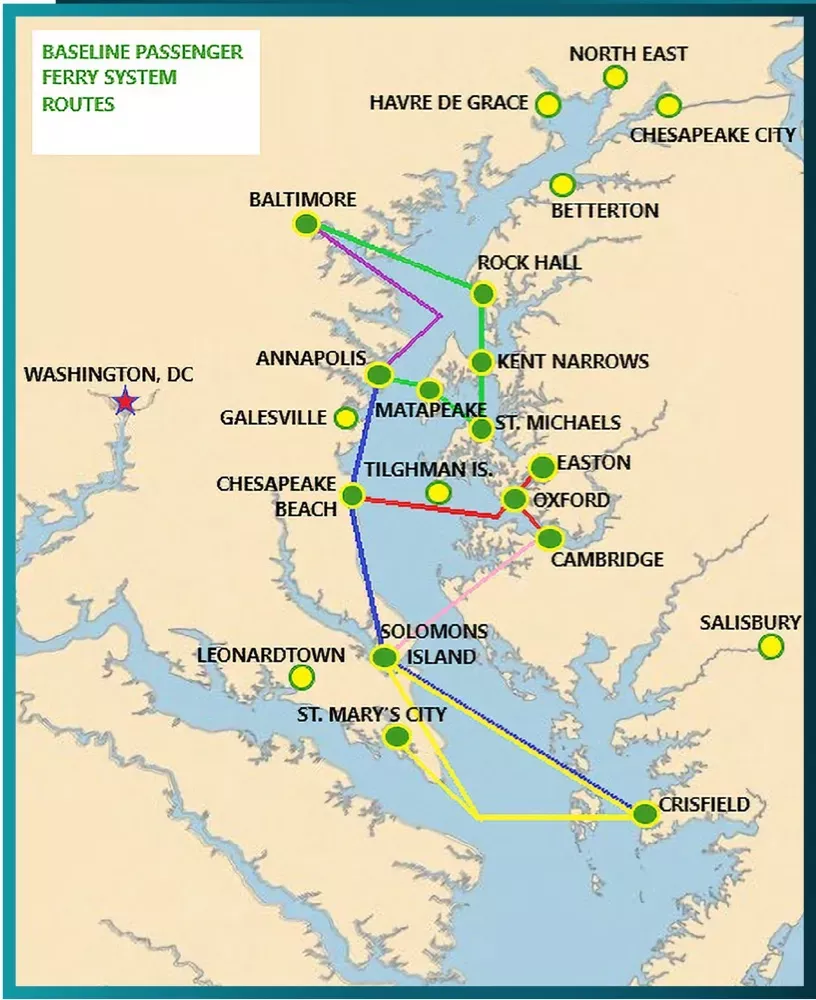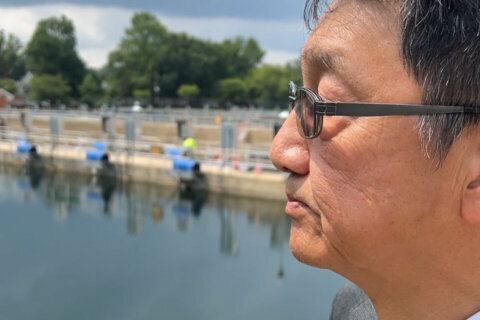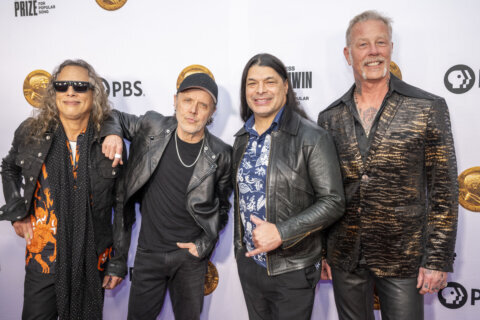Most of us drive to a vacation on the Chesapeake Bay, but tourism officials for the five Maryland counties surrounding the bay hope you might be more willing to explore if a passenger ferry were an option.
An update of an ongoing feasibility study, including a first glimpse of proposed routes and stop locations, was presented last week to the St. Mary’s County Commissioners. Anne Arundel, Calvert, Queen Anne’s and Somerset counties also contributed funds for the study.
Ben Cohen, St. Mary’s lead on the ferry project, told the commissioners, “If you look at the routes, you’ll see that they are crisscrossing and intersecting.”

The map includes green dots, which are more likely to be included initially, as well as yellow dots, representing destinations that would be included later if the ferry network is launched.
On the west side of the bay, proposed stops marked with green dots include Annapolis, Baltimore, Chesapeake Beach and Solomon’s Island. On the east side of the by, initial destinations include St. Michaels, Easton and Oxford.
“None of these stops are set in stone,” Cohen said. “The beauty of this ferry is that it is very flexible.”
Cohen said build-out for the ferry network would be minimal and benefit all counties bordering the bay.
“It doesn’t require a lot of infrastructure,” he said. “It can go to different ports at different times for different event.”
Initially, the ferry network would only carry passengers, not cars. “But, when you get these networks in place, and you strengthen these ports, it makes it easier to step up,” to carrying vehicles, Cohen said.
“The more robust it gets, more vehicles can come through, and the more different routes we can try,” he said.
The ferry itself would be a Candela P-12, which debuted in November. The company claims the ferry, which carries 30 people, is the fastest electric ferry as it goes airborne and skims the water on three carbon fiber wings beneath the hull.
Cohen said the high-tech ferry design would have its own appeal.
“I think the fact that it’s not only going to neat places but it’s also a unique vehicle will attract more people,” he told the commissioners.
The next phase of the feasibility study will solicit input from the project’s stakeholders.
Get breaking news and daily headlines delivered to your email inbox by signing up here.
© 2024 WTOP. All Rights Reserved. This website is not intended for users located within the European Economic Area.








